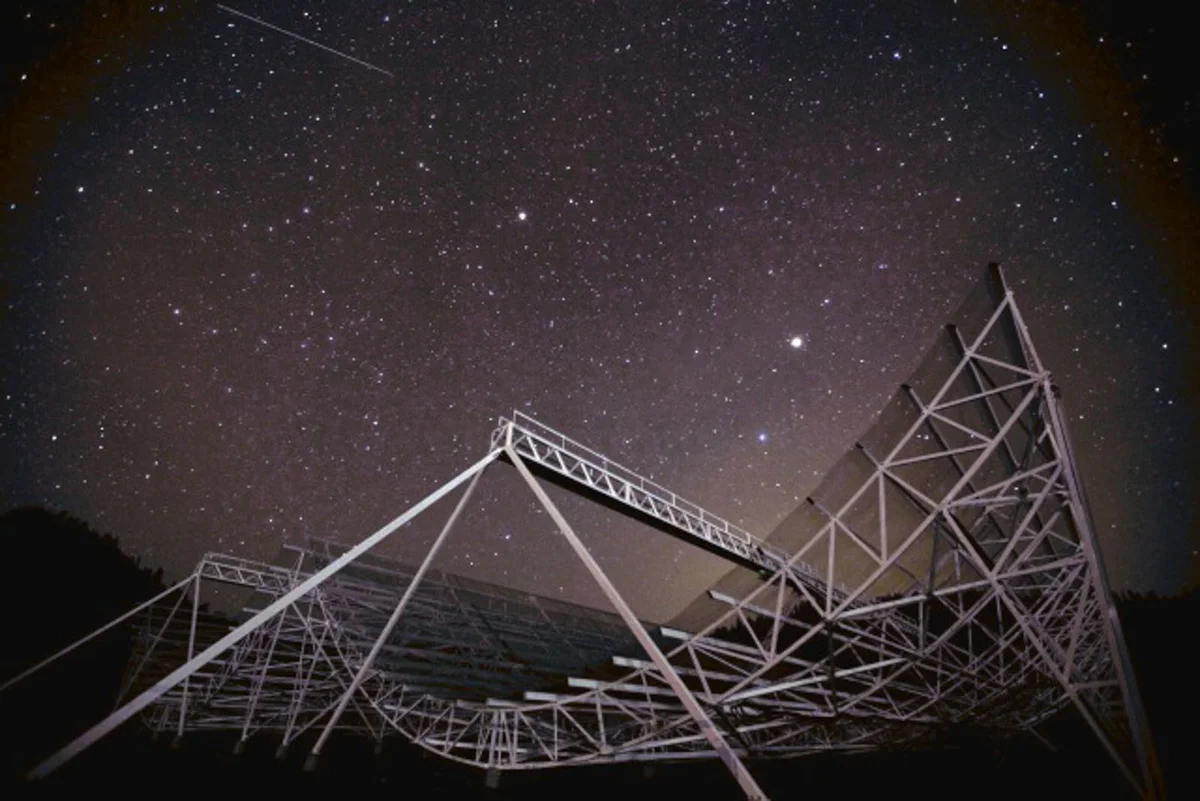
In the summer of 2018, during a pre-commissioning run, the Canadian hydrogen intensity mapping experiment (CHIME) detected 13 fast radio bursts and the second-ever repeating fast radio burst (FRB).
CHIME is a new Canadian collaboration, co-led by UBC, to develop a revolutionary radio telescope that aims to monitor pulsars and detect FRBs.
Fast radio bursts are signals of radio waves lasting only a few milliseconds that originate outside our galaxy. In order to detect these signals, one needs to use a radio telescope. It is estimated that there are roughly 1,000 FRBs that reach our sky per day; however, we’ve only known about their existence since 2007.
Deborah Good, a PhD candidate at UBC working on the CHIME FRB/Pulsar Team, said, “one thing that sometimes people [find confusing] about radio telescopes is that this is light — this is not sound — you don’t hear the signals, you see them. This is just another form of light, but at a lower frequency and therefore a lower energy. So, optical light would have a wavelength of a few hundred nanometers, for us we’re looking at wavelengths of almost a meter.”
CHIME is unique in this respect because, unlike previous radio telescopes, it is designed without any moving parts. CHIME consists of four adjacent 20 metre by 100 metre cylindrical reflectors that focus electromagnetic radiation towards an array of antennas in the middle of the cylinder.
“As the Earth spins, we progressively see different parts of the sky so that over the course of a day we see the entire Northern sky. We are able to observe all the time, which differs from most other telescopes,” said Good.
Unfortunately, the frequency range for detecting FRBs is 400-800 megahertz and the LTE data band is approximately 730 megahertz. According to Good, “there is a big swath of our data that we just have to throw out because it is just all contaminated by our cellphones.”
That is not to say that FRBs cannot be reliably detected. CHIME implements a rigorous combination of computer technology, machine learning algorithms and human verification in order to ensure that the signals are extra-galactic.
As it stands, FRBs are a bit of a cosmological mystery because it is unclear where they originate from. Theories on the source of FRBs range from the pragmatic to the fantastical. Although not impossible, the hypothesis that FRBs are a form of extraterrestrial intelligence is more likely a great proposal for a science fiction thriller than a reality of our universe.
“There’s a lot of speculation that FRBs could be an irregular emission from magnetars which would be like pulsars but different in that they are not driven by their spin, they’re driven by their magnetic field,” said Good.
The hope is that FRBs could be used as a cosmological probe to better understand compact objects such as neutron stars, pulsars, black holes or magnetars. The study of FRBs is still in its infancy; however, scientists still need to collect a lot more data before there is enough evidence to support any specific theory.
“In some ways, they’re probably more exciting as mysteries than they will be once they’re solved,” said Good.

